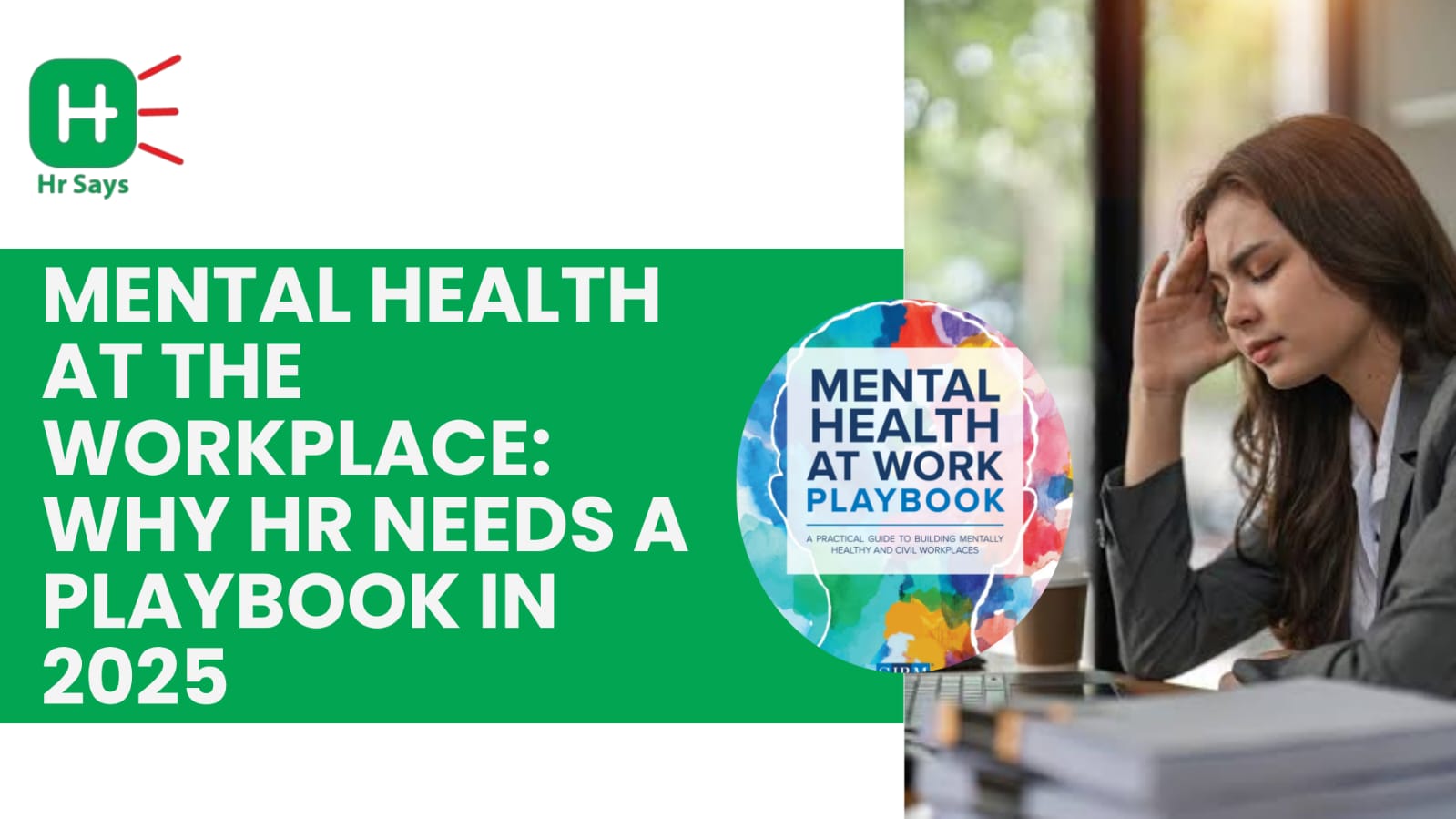Mental health is no longer a side conversation.
In 2025, it's a core business metric — affecting performance, retention, trust, and culture.
But even as awareness grows, most workplaces still rely on reaction over strategy. A mental health poster, a webinar, or an EAP hotline aren’t enough when:
- Burnout hides behind productivity
- Silent disengagement replaces honest feedback
- Employees show up, but mentally switch off
It’s time HR teams stop improvising — and start treating mental health with the structure it deserves: a playbook.
🧠 First: How’s Your Mental Bandwidth? (Self-Assessment)
Let’s start with a quick check-in. This isn't a diagnosis — it’s a reflection exercise to assess emotional strain at work.
💬 “Mental Bandwidth Check-In” — 2-Minute Self TestRate each statement on a scale of 1 (Rarely) to 5 (Frequently):
- I start the workday already feeling drained.
- I find it hard to focus on tasks I usually enjoy.
- I avoid meetings or calls because they feel overwhelming.
- I experience physical signs of stress (fatigue, poor sleep, tension).
- I feel unsupported when I speak about emotional health at work.
- I work through breaks, even when I know I need one.
- I can’t mentally disconnect after working hours.
- I feel guilty or anxious asking for time off.
- I haven’t had a meaningful check-in with my manager recently.
- I can’t recall the last time I felt proud of my work.
- 0–15: You're functioning in a healthy rhythm — keep checking in.
- 16–30: You're showing signs of stress overload. Time to address triggers.
- 31–40: Your bandwidth is stretched — burnout could be near.
- 41–50: You may be in burnout. Pause. Talk to someone. You deserve support.
HRsays Tip: You can anonymously run this in your org as a monthly culture pulse.
🧰 Mental Health Playbook Essentials (What Every HR Team Should Have)
|
Element |
Description |
|
🧾 Psychological Safety Guidelines |
Shared rules for safe meetings, feedback, and disagreement |
|
🌿 Wellness Days Policy |
No-questions-asked leave days for mental recovery |
|
🎙️ Manager Conversation Templates |
For difficult talks, burnout flags, or emotional support |
|
📊 Pulse Survey Framework |
Monthly mental bandwidth checks like the one above |
|
📚 Resource Library |
Curated articles, workshops, support groups, and emergency contacts |
✨ Final Thought: The Real Risk Is Silence
Burnout doesn’t always look like someone falling apart.
It often looks like your best employee — quiet, consistent, and emotionally checked out.
If your workplace doesn’t design for mental wellness, it designs by default — and that default is usually pressure without pause.
Coming soon on HRsays: The Rise of Fractional CHROs — What It Means for Indian Companies
📢 Want to share how your team is building emotionally healthier workplaces? HRsays would love to feature your approach — even if it started with one conversation.

 Mental health isn't just a wellness trend — it's a business priority. This article outlines a four-part framework HRs can use to normalize mental health as part of workplace culture. From proactive policies to anonymous support channels, we focus on structure, not slogans. A self-check tool encourages leaders to start with themselves. If your organization still sees mental health as optional, this playbook changes the narrative.
Mental health isn't just a wellness trend — it's a business priority. This article outlines a four-part framework HRs can use to normalize mental health as part of workplace culture. From proactive policies to anonymous support channels, we focus on structure, not slogans. A self-check tool encourages leaders to start with themselves. If your organization still sees mental health as optional, this playbook changes the narrative.













.jpeg)
.jpeg)

.jpeg)

.jpeg)


.jpeg)

.jpeg)

.jpeg)


